History of Med- Primary Sources
1/76
There's no tags or description
Looks like no tags are added yet.
Name | Mastery | Learn | Test | Matching | Spaced |
|---|
No study sessions yet.
77 Terms
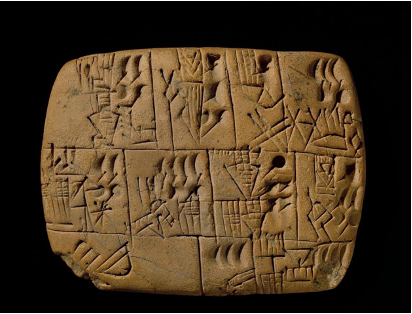
Context:
Who:
When:
Where:
Type of Source:
What was going on at the time:
Who: Specially trained scribes
When: ~ 3200 BCE
Where: Ancient Sumer, (Lower Mesopotamia)
Type of Source: Sumerian Cuneiform tablet, written script, administrative or accounting tablet
What was going on at the time: The rise of cities and states in Mesopotamia led to increased social complexity, requiring records for tax, labor, and trade (bureaucratic revolution). This marks the dawn of writing for administrative purposes. Most people were illiterate, so scribes were specially trained
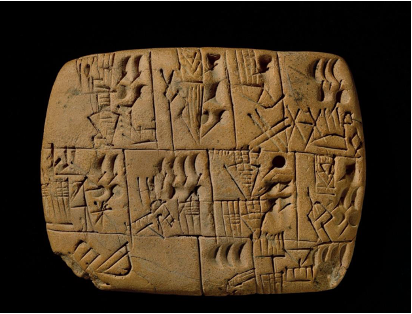
Explain the literal meaning:
Explain the literal meaning:
This tablet records a transaction of goods, labor, or rations, used to manage resources. It includes numerical representations and pictures, organized into sections
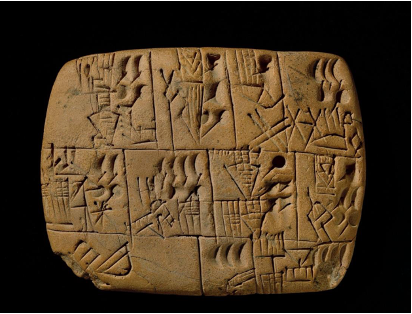
Explain the significance:
Explain the significance:
arguably the earliest script we have written in the world
tells us about literacy and the economy at the time
Once writing and documentation began, information could be preserved and passed on, showing political transformation.
development of writing as an administrative tool that facilitated the rise of complex societies.
provides insights into the economy, social hierarchy, and the political transformations occurring in Mesopotamia, marking a pivotal moment in human history.
most people at this time weren’t literate, scribes were specially trained in schools to generate many of the records, this is arguably the earliest script we have written in the world and tells us about literacy and economy at the time.
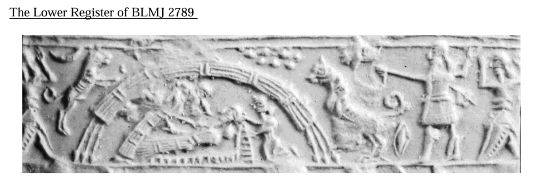
Context:
Who:
When:
Where:
Type of Source:
What was going on at the time:
Who: Likely a scribe, official, or royalty
When: ~ 2300-2100 BCE
Where: Mesopotamia
Type of Source: Cylinder seal impression (object engraved and rolled onto wet clay)
What was going on at the time: This period provides insight into Mesopotamian ritual and purification practices, as well as the significance of astrology and divine interactions with the natural world.
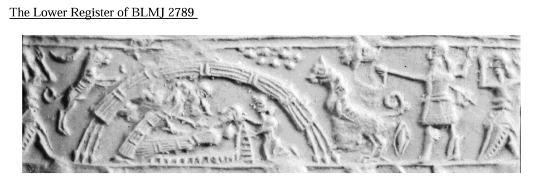
Explain the literal meaning:
“The Lower Register of BLMJ 2789”
Cylinder seal impression… engraved with detailed scene of healing/cleansing ritual of patient
within image:
There is signs of a dog jumping on stone
7 star constellation (astrology)
a priest
3 people within the tomb-like structure
incantation being done by a priest
someone holding a lamp
a bearded man dressed in a tunic or quilt, holding bow towards the hut, in a defensive or assertive pose. P
erson in hut reclined is likely being treated or healed by priest
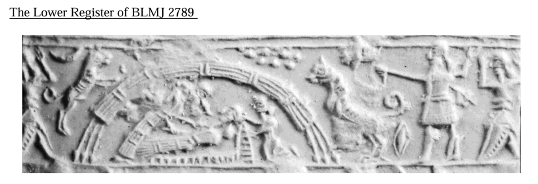
Explain the significance:
insight into Mesopotamian ritual and purification practices
significance of astrology and other divine aspects interacting with the natural world
represents the structure of society, with an assertive figure protecting the ill and a priest healing.
It can be interpreted as a ritual of healing or purification, giving insight into ideas about medicine at this time, where health and illness were believed to require divine intervention.
Code of Hammurabi
Who:
When:
Where:
Type of Source:
What was going on at the time:
Who: Hammurabi (ruler of Babylon)
When: ~ 1754 BCE
Where: Babylon, Mesopotamia (discovered in Persia in 1901)
Type of Source: A list of laws
What was going on at the time: Babylon was one of the first bustling empires of the ancient world, ruled by an intelligent leader. This period saw the development of early legal and social structures.
Code of Hammurabi
Explain the literal meaning:
The source is a list of laws presented in an "if this, then that" format, outlining the consequences for breaking each law. It includes the principle of "eye-for-eye".
Code of Hammurabi
Explain the significance:
one of the earliest known examples of a written legal code
provides insight into the legal and social structures of early civilization.
The "eye-for-eye" principle shows an early form of legal reasoning.
reveals the types of disputes that were common, ideas of justice, and the evolution of legal ideas and punishment.
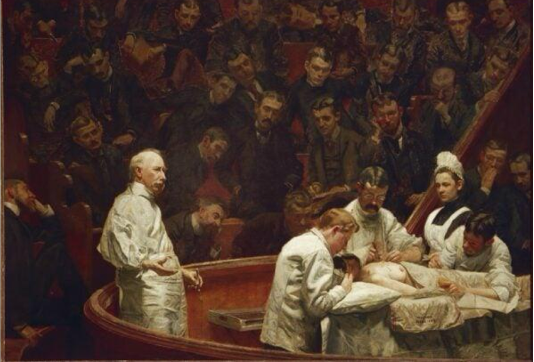
Explain the context:
"The Agnew Clinic"
Who:
When:
Where:
Type of Source:
What was going on at the time:
Who: Thomas Eakins (artist)
When: 1889
Where: A University Lecture Hall
Type of Source: Oil painting - historical medical painting
What was going on at the time: This was a time of transition from premodern to modern medicine, characterized by embracing scientific methods, formal training for doctors, and hospital-based clinical instruction. Surgical practices were taught with audiences present.

Explain the literal meaning:
depicts Dr. Agnew performing surgery in front of an audience at a university.
The light is focused on the operation- spotlight signifies importance.
The students observing are all male, white, and dressed nicely (upper class).
The only female present is a nurse.
Dr. Agnew's stance, attire, and body language suggest he is powerful, clean, and respected. (heirarchy).
The body is exposed, indicating an impersonal treatment for learning purposes.
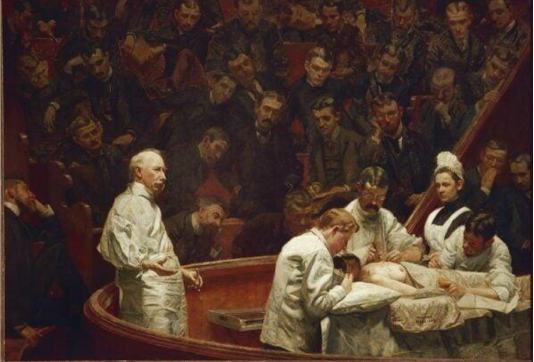
Explain the significance:
reflects a time of transition in medicine.
highlights the emerging scientific methods and formal medical training.
illustrates the gender roles of the time,
women as caregivers, men as hands-on, decision-makers.
The exposed body shows a shift towards a more impersonal, scientific approach to medicine in educational setting
composition also subtly reveals the social stratification of the time through the depiction of the students.
all students eager to see the surgery demonstrates the evolution of surgery as an essential component of medical education (importance of demonstrations in teaching practices)
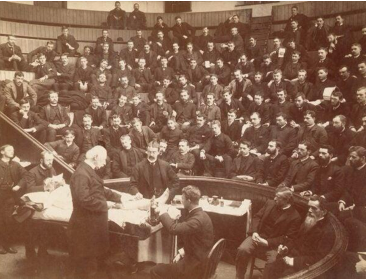
This photograph is similar to which other primary source
"The Agnew Clinic"
both are dr. Agnew demonstrations to students
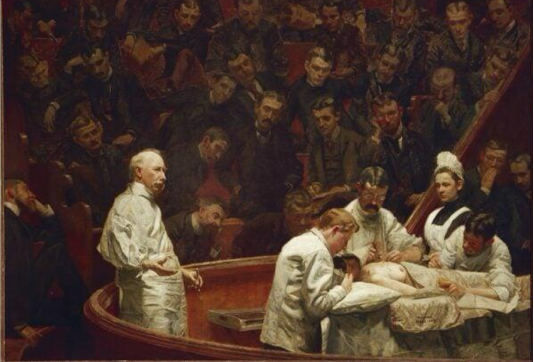
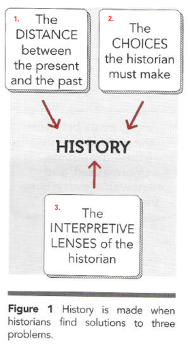
(not primary source, just important image)
Explain what is meant by:
distance
choice
interpretive lense
distance: ex. May find something cruel that was once thought to be funny
choices: ex. Where we focus research temporally and spatially (what questions will I ask)
interpretive lenses: ex focus on political history, gender history, etc
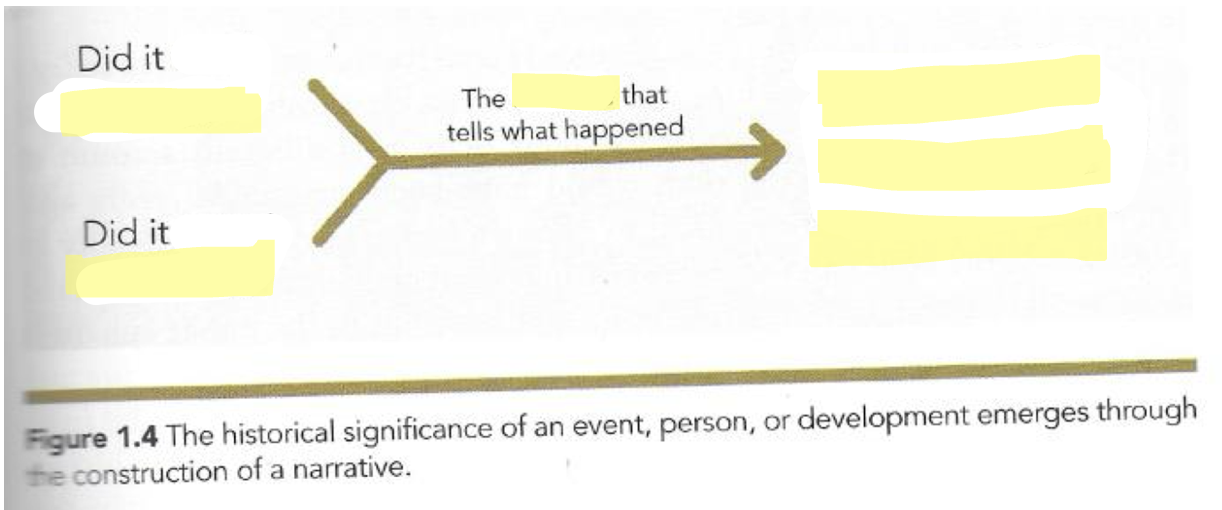
not primary source but likely to come up
Fill in the blank
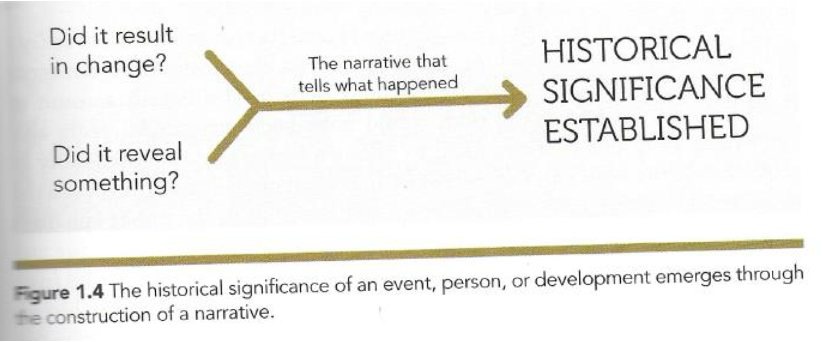
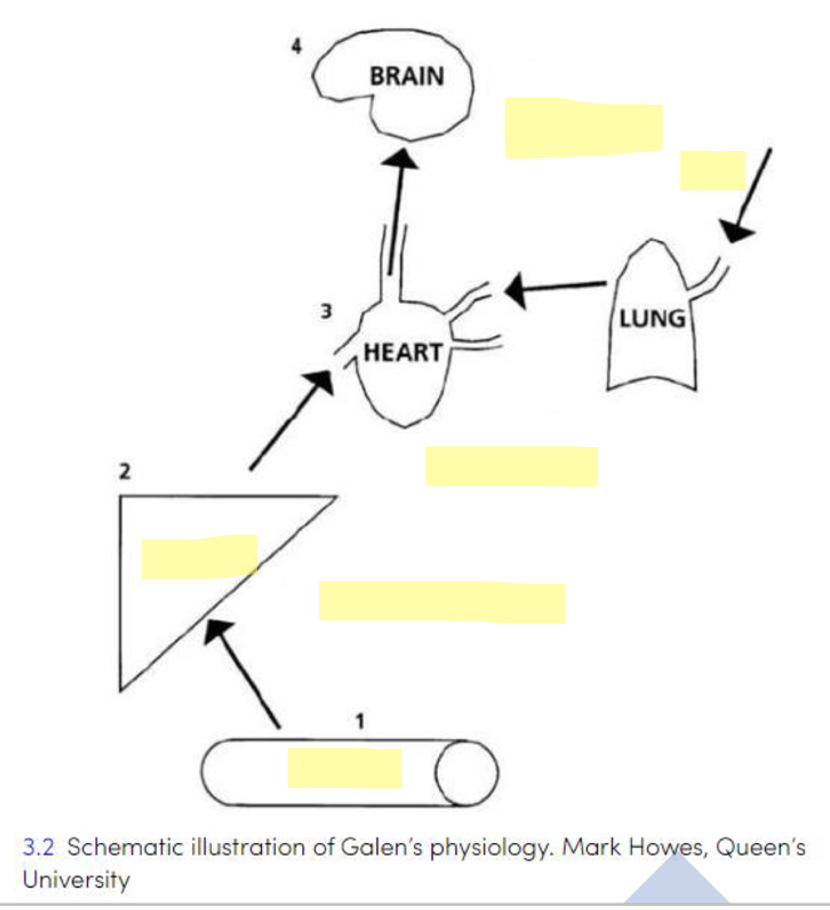
not primary source but likely to come up
Fill in the blank
according to Galen, food absorbed, transported to liver... transformed with natural spirit (liver referred to as seed of life)
food goes to liver and transforms to blood... goes to lung where it is filled with "vital spirit" (air)
then blood flows outward to arteries and veins, to all organs including brain
at brain it has animal spirit- a source of motion
health depends on balance of humour and how strong is life forces.... animal spirit and vital spirit.

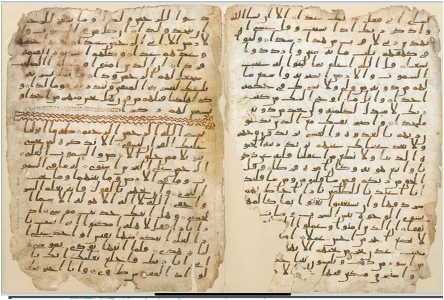
Explain the context:
2 Pages of the Qur’an
Who:
When:
Where:
Type of Source:
What was going on at the time:
Who: The words are attributed to Muhammed (prophet) who received visions and voices from the angel Gabriel.
When: The visions began around 610 CE in Hira Cave. This manuscript is dated to 645 CE.
Where: The visions occurred in Hira Cave, near Mecca. The manuscript itself is one of the earliest surviving examples.
Type of Source: Manuscript - religious text
What was going on at the time: This marks the early period of Islam. The revelations were initially orally transmitted and then gradually written down. Communal reading and teaching were important.
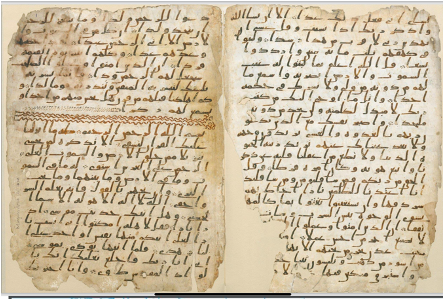
Explain the literal meaning:
The source consists of two pages of the Qur’an written in Arabic.
Written in Arabic
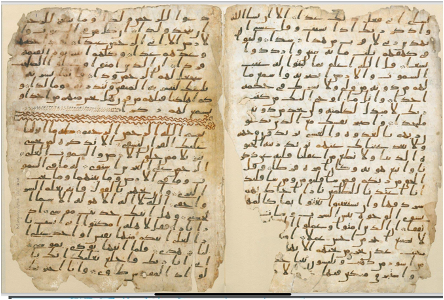
Explain the significance:
earliest surviving known manuscript of the Qur’an.
holds immense religious and cultural significance for Muslims.
represents the preservation of the Qur’an and the foundation of Islamic religious and cultural identity
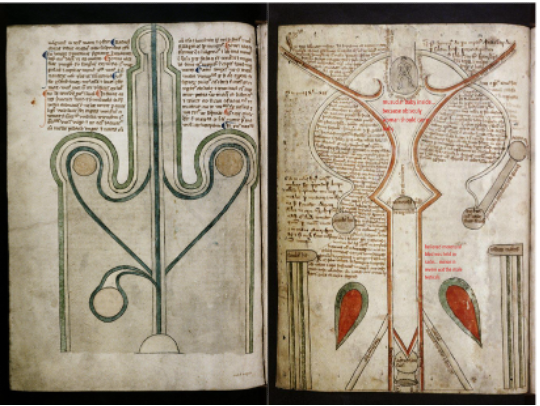
Explain the context:
Who:
When:
Where:
Type of Source:
What was going on at the time:
Who: The ideas presented came from Aristotle, who believed men and women were the same sex, but women were "less developed". The manuscript is housed in the Oxford Library.
When: 1250-1310 (mid 13th to early 14th century)
Where: Likely Western Europe, within the Roman world's influence.
Type of Source: Manuscript - medical anatomical
What was going on at the time: This period represents Christian medicine and its understanding of anatomy, heavily influenced by classical ideas, but with limited empirical research due to a lack of dissection.

Explain the literal meaning:
diagram of male anatomy on the left
female anatomy on the right.
female anatomy is displayed as an inverted male, suggesting a "one-sex model."
A muscular baby is depicted inside the female diagram.
The vaginal canal is shown as an inverted penal shaft.
menstrual blood drawn in sacs
Mirror images of each other
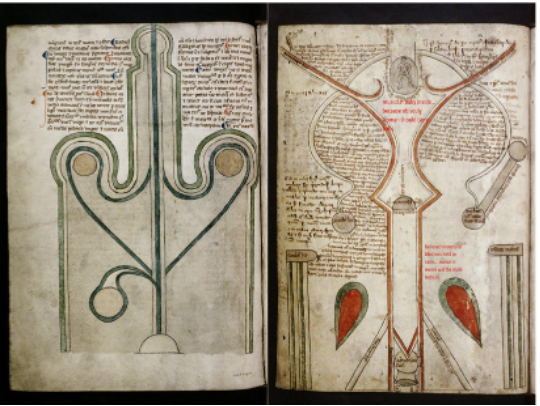
Explain the significance:
reveals the ideas of Christian medicine & lack of research in female anatomy during this period.
exemplifies the "one-sex model" (we are all men at different stages of development)
Humoural theory: women are colder, genitalia need to be inside
They “didn’t cook” long enough (women wet and cold, men dry and warm)
Considered underdeveloped men
drawings not based on dissection, indicating limitations in medical knowledge and educational practices.
demonstrates the belief that women were inferior and needed care.
inclusion of the baby reinforces the expectation of women carrying children.
These ideas contributed to gender bias in biology, medicine, and society, with lasting social and cultural effects, including restrictions on women's rights.
The belief that male semen was "pure" and menstrual blood "impure" further reinforced these biases.
Explain the circular logic
(how women were viewed, “one-sex model”)
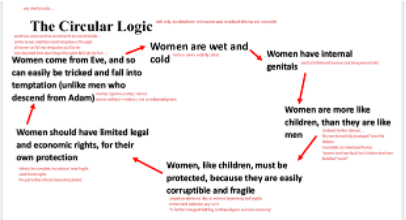
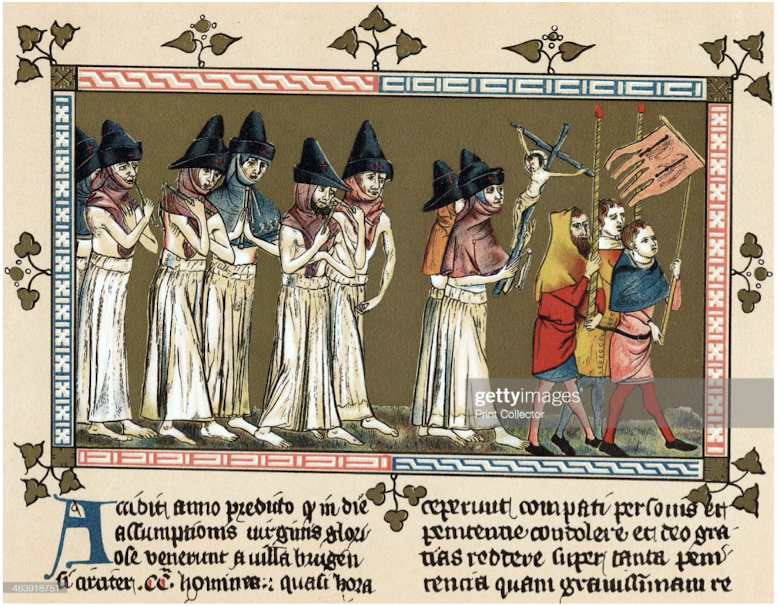
Context:
Who:
When:
Where:
Type of Source:
What was going on at the time:
Who: Unknown
When: 1349
Where: Netherlands, Tournai (Doornik)
Type of Source: drawing/art- Medieval manuscript illustration
What was going on at the time: the plague (Black Death)
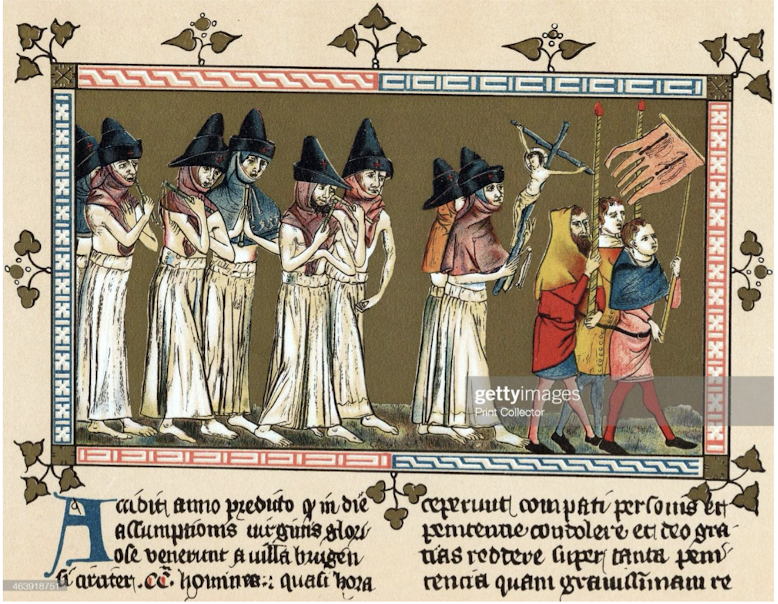
Literal Meaning:
Flagellants (“Brothers of the Cross")
self-punishing religious devotees
marching barefoot in white robes (purity & repentance) and dark hats (signifying mourning)
public displays of self-flagellation (whipping themselves in an act of penance)
Some holding religious symbols (crucifix, banner with a depiction of a scourged hand)
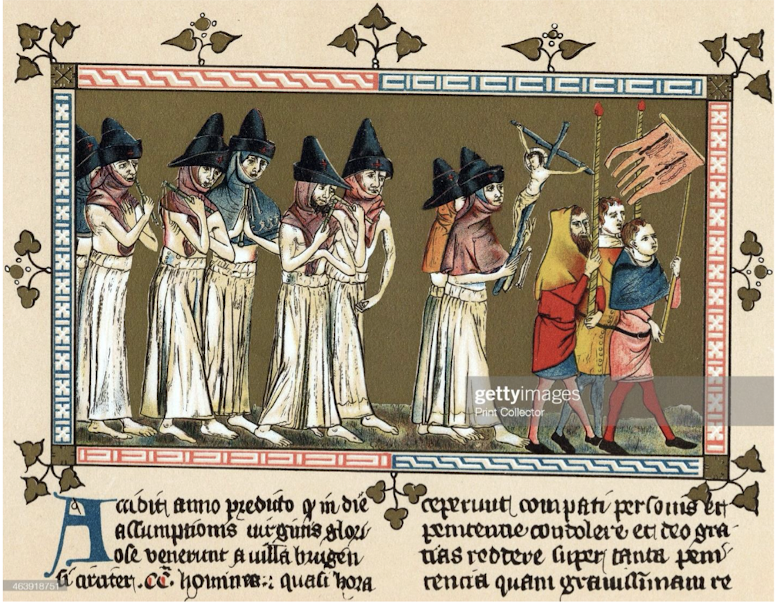
Significance:
Illustrates a religious response to the plague
would go from village to village ringing bells, attracting people, promoting whipping
believed self-inflicted pain could makeup for sins and ward off the disease.
belief that god would stop the plague
church used to prescribe (involuntary) public whippings
these whippings, were voluntary, promoted by flagellants
shows role religion played in the plague
became radicalized, targeting Jews communities
leads into attacking of jewish communities…
anti-jewish conspiracies → Scapegoats (jews poisoning wells)
killed many individuals
mob mentality, everyone turns against their neighbour
Emotional Tone: The figures appear solemn, with downcast eyes, reinforcing the seriousness of their actions. The act of communal suffering is evident.
seeking any type of answer/explanation in time of hardship
The Decameron:describes how people responded to the Black Death with extreme religious devotion, isolation, or hedonism. This image aligns with the intense religious fervor seen in medieval European society during pandemics.
Fear and desperation led to radical social movements.
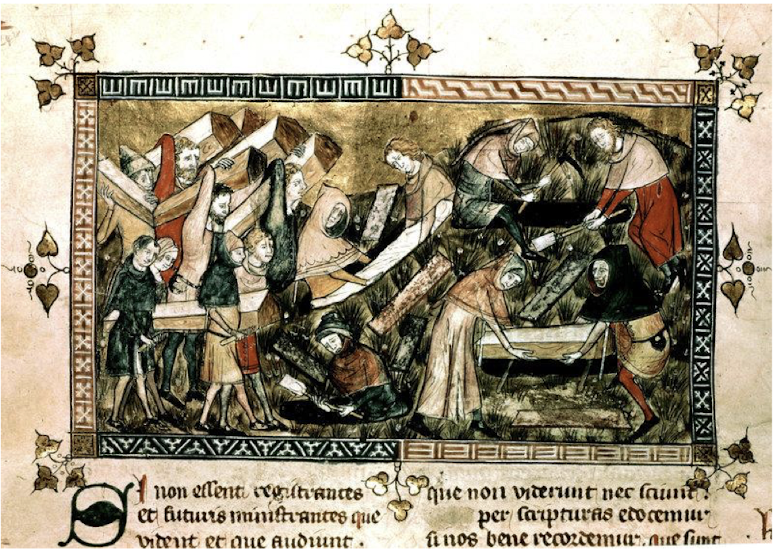
Context:
Who:
When:
Where:
Type of Source:
What was going on at the time:
Who: ?
When: 1349
Where: Tourani
Type of Source: Medieval manuscript illustration
What was going on at the time: plague
overwhelming number of deaths led to the breakdown of burial customs.
Traditional Christian burials = impossible (too many victims)
lead to mass graves, desperate situation.
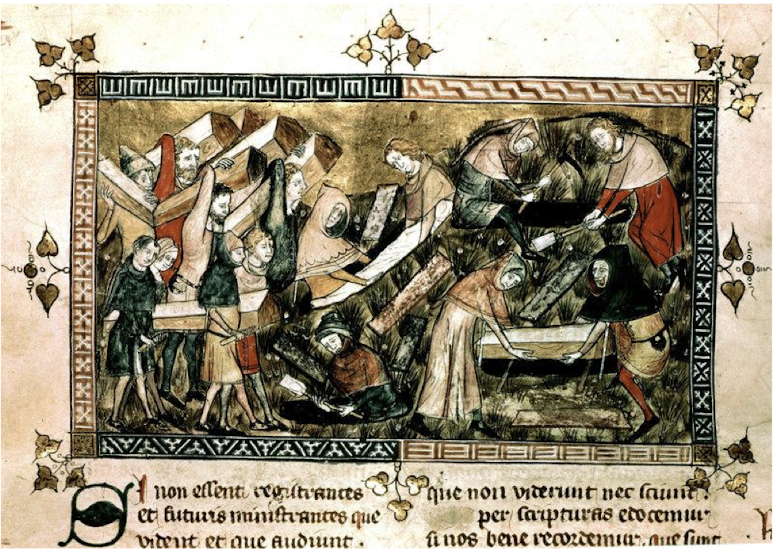
Literal Meaning:
mass burials of plague victims during the plague
Several individuals are engaged in the handling of corpses, placing them in graves or coffins.
Others are mourning or participating in funerary rites.
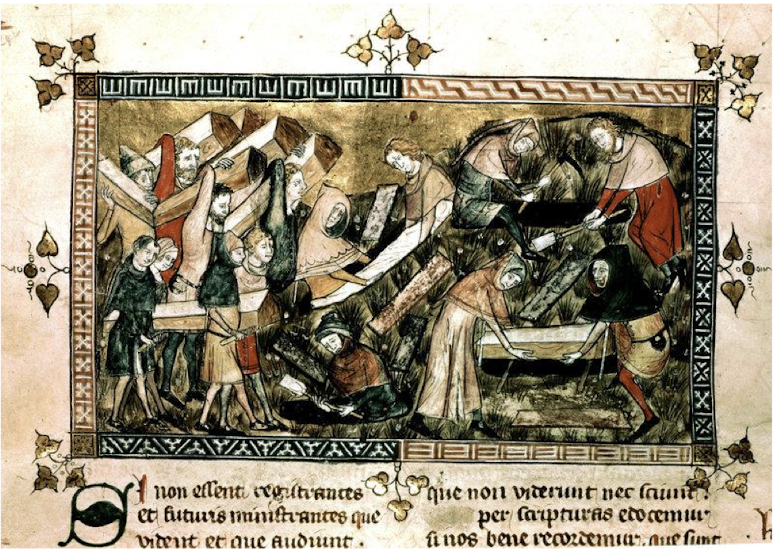
Significance:
Death was deeply tied to religious doctrine in medieval Europe. Many believed the plague was divine punishment for sins, and proper burial was essential for the soul’s passage to the afterlife. The depiction of clergy among the figures suggests the importance of last rites, though many victims likely died without them.
presence of clergy suggestsinvolvement of the Church in burial rites, despite the crisis.
chaotic handling of bodies reflects urgency & desperation
figures appear to be struggling under the weight of the deceased (large-scale death)
dark, muted color palette and detailed facial expressions convey sorrow, exhaustion, and despair.
scene is grim, reinforcing horror of the plague. Figures are overwhelmed by death, widespread devastation.
overwhelmed traditional institutions, including burial practices and religious rites.
Scale of death challenged religious authorities ability to provide spiritual guidance.
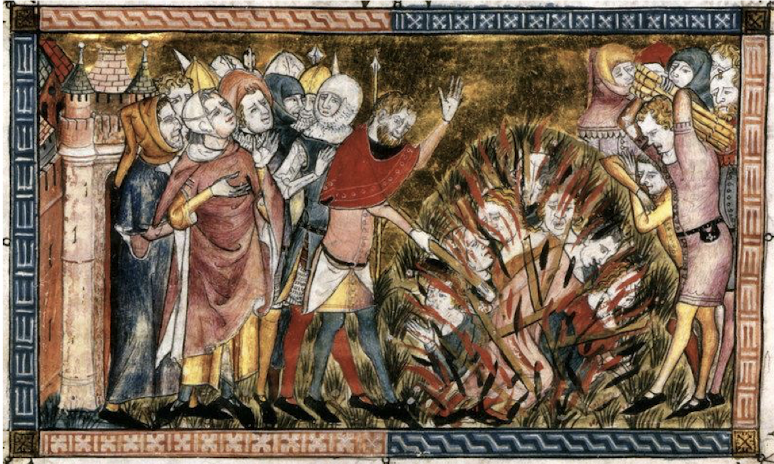
Context:
Who:
When:
Where:
Type of Source:
What was going on at the time:
Who: Gilles li Muisis (French poet)
When: 1340s
Where: ?
Type of Source: History book- Royal Library of Belgium
What was going on at the time: Plague- targeting Jews as a Scapegoat

Literal Meaning:
mass burning of people
figures on the left, dressed in medieval attire (nobility, clergy, or town leaders)
figures on the right are forcing victims into the fire
The burning bodies in the center

Significance:
plague led to widespread paranoia
seek explanations for the plague.
Jews were often scapegoated (accused of poisoning wells, spreading the disease)
accusations led to violent massacres (particularly in Holy Roman Empire, France, and Spain)
Entire Jewish communities exterminated through executions, expulsions, and burnings
fuelled by deep-seated anti-Semitic beliefs.
marginalization of Jewish communities, which continued for centuries.
The burning pyre = focal point, illustrating brutality
facial expressions and body language of the executioners = lack of remorse (widespread acceptance of violence)
passivity of onlookers = normalized violence against marginalized groups
presence clergy watching the event, these massacres often sanctioned by local authorities.
children among the victims emphasizes the indiscriminate nature of killings.
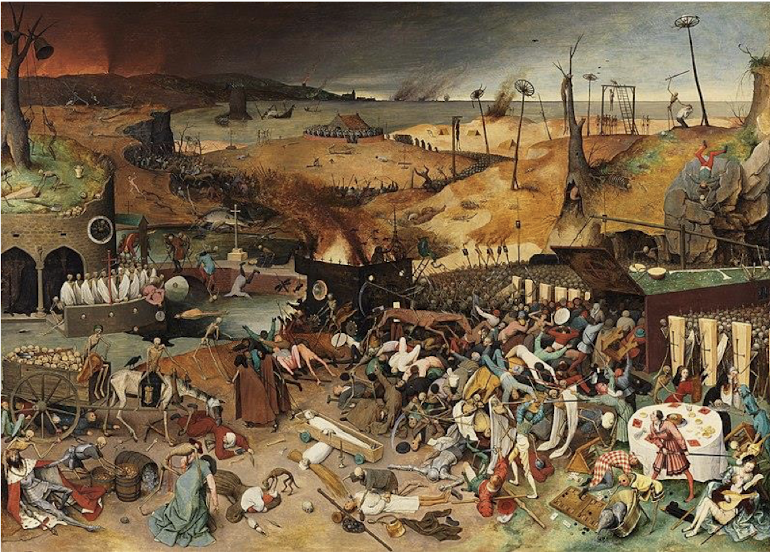
Context:
The Triumph of Death
Who:
When:
Where:
Type of Source:
What was going on at the time:
Who: Pieter Bruegel the Elder
When: 1562
Where: ?
Type of Source: painting
What was going on at the time: Plague, widespread death taking on humanity
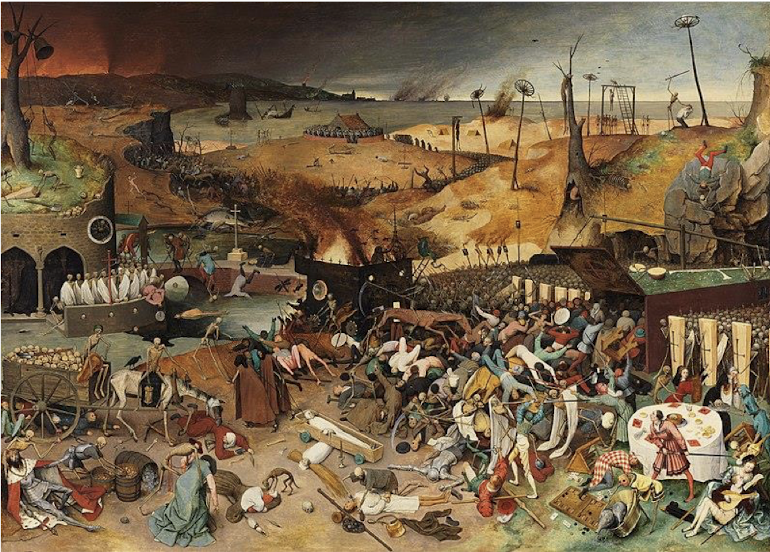
Literal Meaning:
woman holding spindle while dying
skeletons everywhere
dog eating baby in dying woman’s arms
skeleton stealing belongings (hats)
king dying, skeleton holding up hourglass
dead bodies everywhere
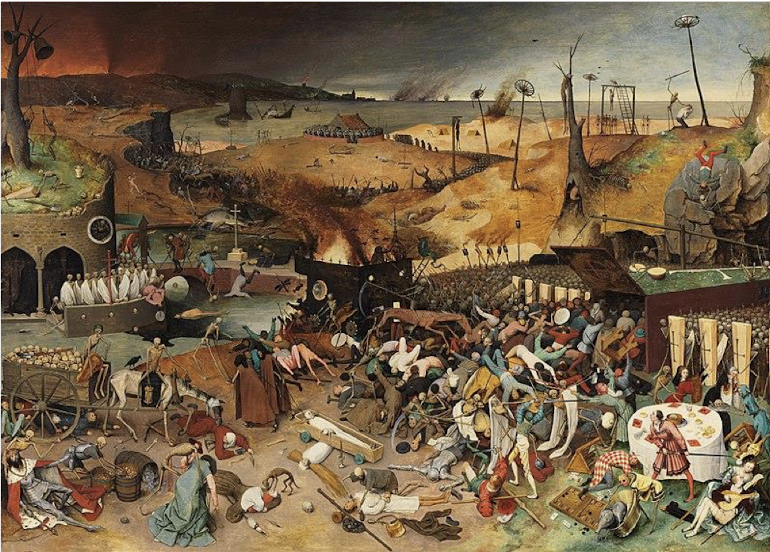
Significance:
fragility of life and the inevitability of death. spread of disease
Death is an unstoppable force, sweeping away all in its path.
skeletons represent death → The Dance of Death
hourglass= time is running out
ultimate defeat of life.
skeletons razes the Earth, scorch the land, pollutes, and deforests.
barren landscape with warm tones → hellish atmosphere.
People react in different ways to Death, some fighting to survive, others resigned or frightened.
skeleton of death leads his armies on a red horse (hell)
woman still holding spindle, shows what was expected of women at the time
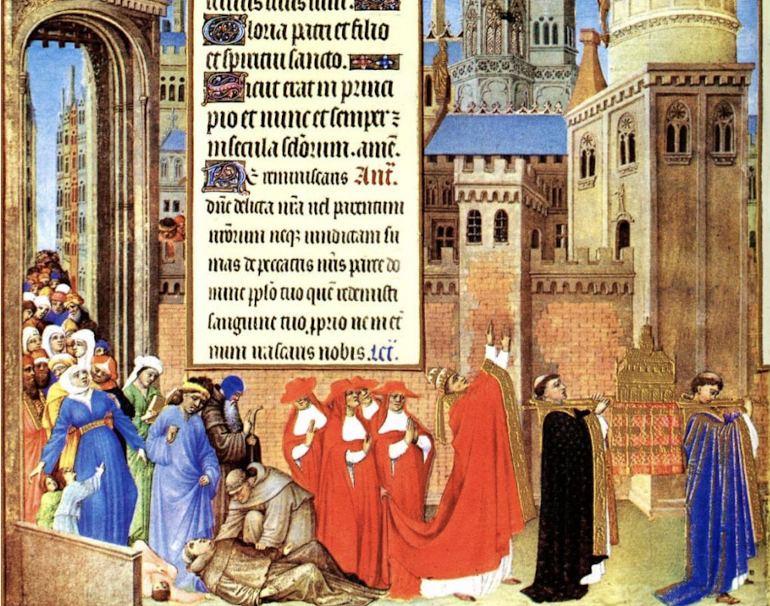
Context:
“Pope Gregory the Great's procession”
Who:
When:
Where:
Type of Source:
What was going on at the time:
Who: Limbourg brothers (Paul, Johan and Herman)
When: early 15th century
Where: Rome
Type of Source: Christian prayer book (“The Very Rich Hours of the Duke of Berry”)
What was going on at the time: Plague
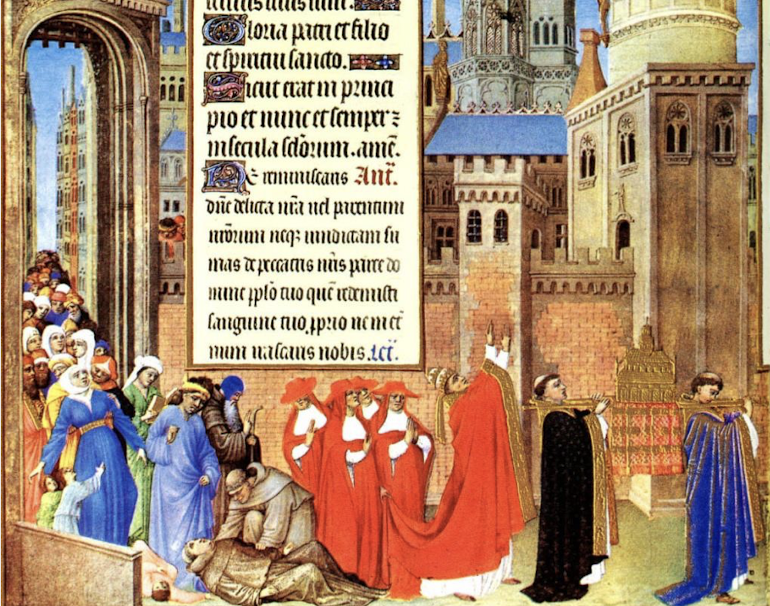
Literal Meaning:
Pope Gregory the Great leading a procession in Rome, praying for an end to the first pandemic plague
someone is sick and dying
pope leading the way
doctors, priests, patients
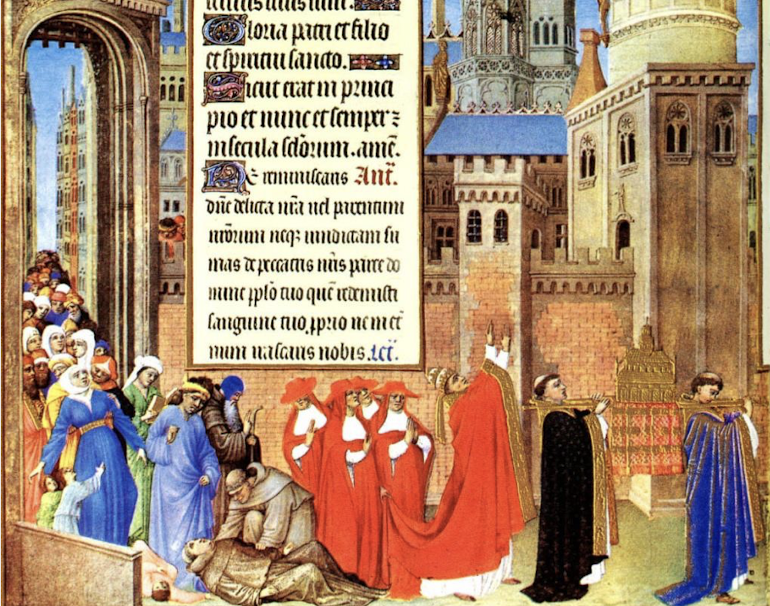
Significance:
Illustrates role of religious leadership and public prayer in response to widespread disease in the early medieval period.
Pope Gregory I in 589 when plague struck Rome.
Pope Pelagius died by plague, all of Rome acclaimed Gregory as Pope.
He fled to a cave, but the people found him and brought him back to Rome
The later date of the prayerbook also shows the enduring memory of the plague
doctors and priests worked side by side at beds of those sick and dying
priests- administer last rights
doctor- judge if they would survive or not
patient- make final will, confess sins
praying away the plague came from notion that society did something wrong, they offended god in some way
as christian people they couldn't understand why god would let them suffer like this
submit self, beg for gods mercy, show how sorry they are
rise of religious devotion during plague.
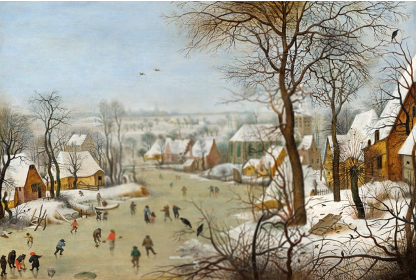
Context:
“a winter landscape with Bird Trap”
Who:
When:
Where:
Type of Source:
What was going on at the time:
Who: Peter Brueghel the Elder (artist)
When: 1565
Where: Europe - Hadsburg Netherlands
Type of Source: Painting
What was going on at the time: the little ice age → period of colder temperatures, harsher winters, impacted agriculture and social life
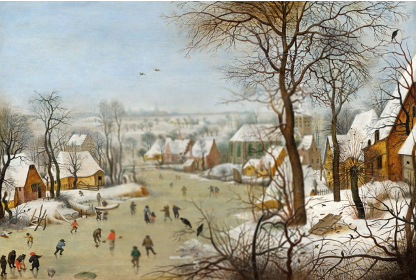
Explain the literal meaning:
ice skating, playing games, on frozen water
snow, bare trees.
There is a bird trap (wooden structure) on the right.
The people are wearing winter clothing.
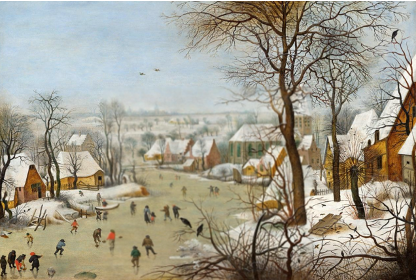
Explain the significance:
reflects cultural, climatic, and social context of "the little ice age"
shows how rural life adapted to cold temperatures and harsh winters for recreation
seemingly positive picture…
The bird trap = subtle reminder of danger and fate (even in a seemingly peaceful scene)
highlights the challenges (famine & disease) during/for years after this period.

Context:
Who:
When:
Where:
Type of Source:
What was going on at the time:
Who: ?
When: 15th century
Where: Northern Europe, likely France
Type of Source: Painting from medieval prayer book
What was going on at the time: period followed the Black Death → ongoing effects of colder weather, impacting peasant life and agriculture
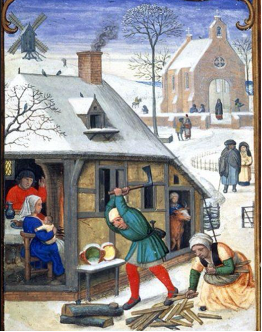
Explain the literal meaning:
represents peasant life, agricultural labor, and farmhouse living
years of poor weather.
man splitting wood
people bundled up
cow inside the house
windmill in background
snow-covered home
People huddling around church.
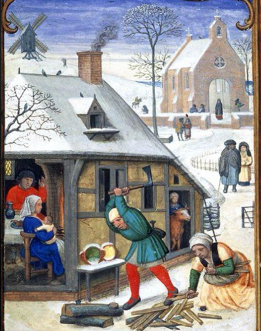
Explain the significance:
reflects the poor weather conditions
changes in behaviour & poor harvests.
Bringing animals inside = adaptation to stay warm (body heat).
People around church = turning to religion in hardship
climate pressure made ordinary tasks harder, requiring adaptation
insight into societal structures → gender roles
men working, women caring for infants
dire times and living conditions.
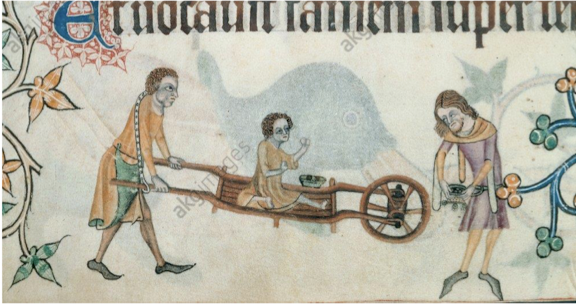
Identify: when, where
Literal Meaning:
Analysis:
Identify:
from the Luttrell Psalter (English manuscript)
14th century.
Literal Meaning:
child in a wheelchair being pushed
Analysis:
visual representation of daily routine, social interaction, and material culture. Th
Representation of Disability
helpers/companions pushing wheelchair → suggests social support for individuals with disabilities, how communities may accommodate individuals
chair → early form of assistive technology, adapted tools to assist those with mobility issues.
inclusion of this scene in a manuscript = awareness and acknowledgment of disability within society
implies a degree of integration within the community. Rather than being hidden away, child is participating in/observing daily activities (social inclusion)
glimpse into how disability might have been perceived/managed in medieval times, practical and social aspects of care and inclusion.
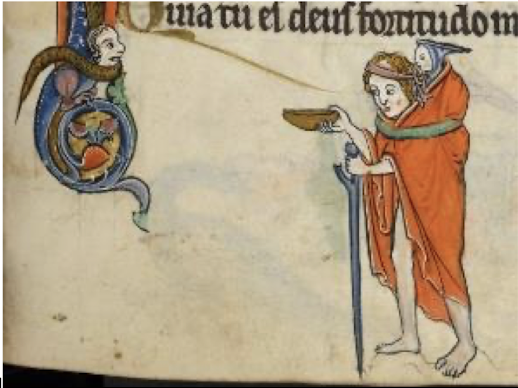
Identify: when, where
Literal Meaning:
Analysis:
Image 2 (English Psalter, ca. 1250)
Identify:
manuscript illumination from an English (prayer book)
~1250
Literal Meaning:
person holding a staff.
Analysis:
The staff = mobility aid.
Its presence in a prayer book suggests inclusion of individuals with disabilities in religious life
integration of people with disabilities into society
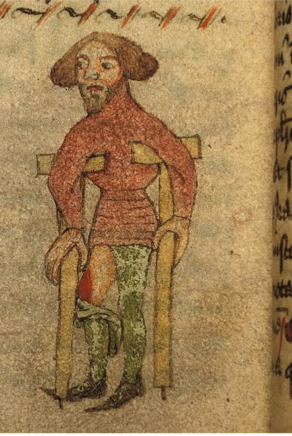
Identify: when, what
Literal Meaning:
Analysis:
Identify:
15th-century
"medieval marginalia".
Literal Meaning:
specific type of aid, similar to crutches
Analysis:
specific assistive devices existed in the 15th century
people with disabilities recognized + given resources (mobility aids)
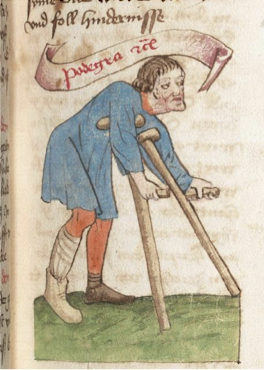
Identify:
Literal Meaning:
Analysis:
Identify:
15th-century
German illustration
Literal Meaning:
image depicts crutches. The prompt asks for a comparison to the image above, which implies a different depiction of an aid.
Analysis:
evolution/variations in assistive devices during the medieval period.
different than "medieval marginalia", more modern
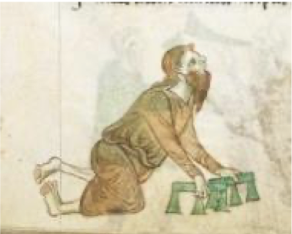
Identify: when
Literal Meaning:
Analysis:
Identify:
13th-century manuscript
Literal Meaning:
individual using hand trestles as mobility aid
Analysis:
presence of hand trestles indicates various types of mobility aids were used in medieval era.
basic principles of support and mobility have been adapted over time.

Identify: when
Literal Meaning:
Analysis:
Identify:
from the Luttrell Psalter
1325
"two lame and one blind"
Literal Meaning:
pilgrims with mobility issues traveling to visit a shrine.
Analysis:
people with disabilities participated in pilgrimages and religious journeys.
suggests the availability of aids in the 14th century
existence of shrines, act of pilgrimage imply importance of faith and healing in medieval society
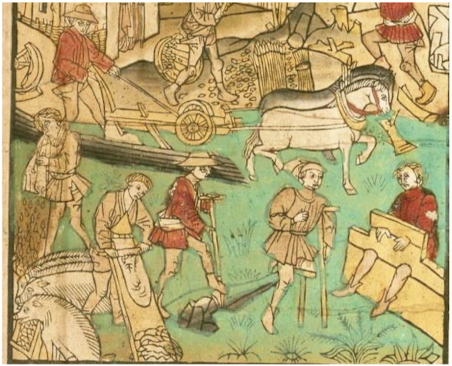
Identify:
Literal Meaning:
Analysis:
Identify: An illustration of rural life in 15th-century Germany.
Literal Meaning: The image depicts a scene of rural life, including people with a prosthetic and mobility aids.
Analysis: This image provides insight into how people with disabilities were integrated into rural communities in 15th-century Germany. The presence of a prosthetic and other mobility aids suggests that efforts were made to accommodate individuals with physical impairments. The question of whether those with disabilities are "marginalized" or "visible" encourages an analysis of their social roles and integration into daily life.

Identify: when
Literal Meaning:
Analysis:
Image 8 (15th-century French Book of Hours)
Identify:
15th-century
French prayer book
Literal Meaning:
bandage below the knee.
Analysis:
bandage suggests:
awareness of wound care
amputation
securing assistive devices,
indicating attention to the practical needs of people with disabilities.

Identify: when, where
Literal Meaning:
Analysis:
Identify:
two-part illustration
from the Yate Thompson manuscript
England
1330s
Literal Meaning:
St. Dominic on the far right.
left looks injured
right looks to be healed, praying, etc
Analysis:
religion = form of healing

Context:
London Great Plague Primary Source Analysis
Who:
When:
Where:
Type of Source:
What was going on at the time:
Who: Henry Muddiman (journalist, writer for the London Gazette)
When: 1665
Where: London, England
Type of Source: letter (to Joseph Williamson- Politician in King Charles II government)
What was going on at the time: Plague
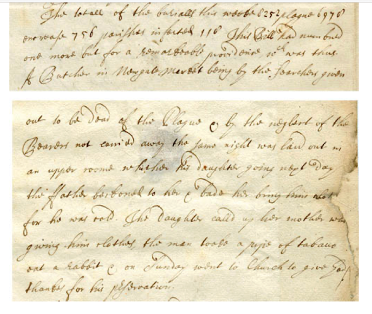
Literal meaning:
letter discusses the total amount of death, infections, and burials.
these numbers are 1 higher than they should be
miracle recovery (the butcher).
This man was presumed dead,
‘neglect of the boarders’ → those responsible for the disposal of the bodies of the dead didnt come get him
once thought to be dead man turned to his daughter and requested ale, tobacco and rabbit, followed by him turning to God to thank him for being saved.

Explain the significance:
suggests an intervention from God was believed to have occurred
implying the large religious focus during the time of the plague
large impact of the plague as well as what it was like to live during this time of sickness and death.
tells us about different roles in society (boarders, searchers)
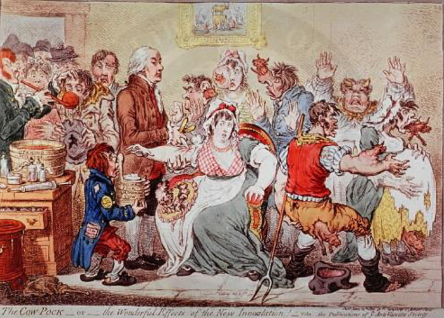
Context:
Who:
When:
Where:
Type of Source:
What was going on at the time:
Who: James Gillray (artist)
When: 1802
Where: England
Type of Source: Painting - antivax propaganda (political cartoon)
What was going on at the time:
Edward Jenner recently introduced smallpox vaccine,
faced public resistance, skepticism, and misinformation
This period represents a clash between emerging medical science and popular belief systems at the end of the Enlightenment.
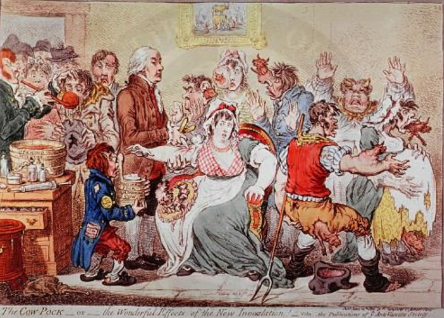
Explain the literal meaning:
people with mutations
turning into monsters with cow parts (horns, snouts, etc.).
A dairymaid is in the middle
a man (likely Edward Jenner) distributing vaccines.
painting in the background shows the golden bot statue
People with shovels
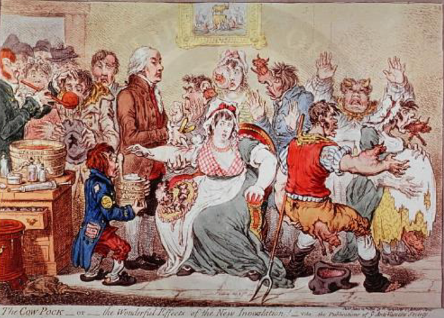
Explain the significance:
attempt to induce public fear, skepticism towards smallpox vaccine
represents public resistance to medical innovation
pseudoscientific fears vaccines
painting symbolizes a clash between emerging medical science and traditional beliefs,
some placed their hope in divine intervention ("golden bot statue") rather than scientific advancements.
It highlights the use of propaganda to spread misinformation.
similar to COVID-19… anti vax is not new!
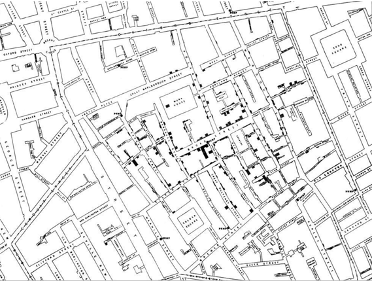
Context:
Who:
When:
Where:
Type of Source:
What was going on at the time:
Who: John Snow (physician)
When: Mid-1800s
Where: Soho, London
Type of Source: Map
What was going on at the time:
Cholera outbreaks = major public health concern
The prevailing miasma theory suggested that disease came from bad smells/air
debate about the causes of disease
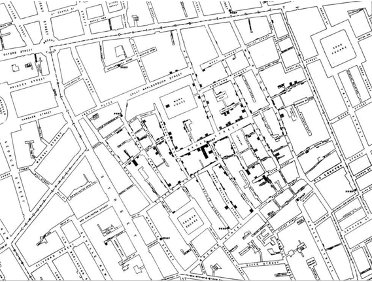
Explain the literal meaning:
map (Soho area of London) shows
streets
buildings
water pumps
Black squares on the map indicate tracked cases of cholera.

Explain the significance:
first use of data visualization and disease mapping for public health
plotting cholera cases (traced to the Broad Street pump)
disproved the idea that poverty = disease
that anyone using the contaminated pump could get sick regardless of their status.
evidence went against miasma theory
suggesting that cholera was waterborne.
led to the first water boil advisory
kickstarted urban sanitization and public health efforts
demonstrates power of scientific communication and advocacy
challenging established beliefs, even when facing resistance from authorities.
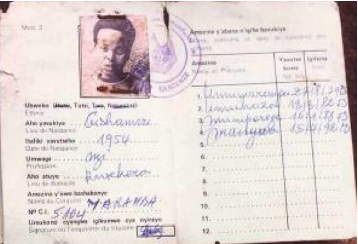
Context:
Who:
When:
Where:
Type of Source:
What was going on at the time:
Who: Issued by the government of Rwanda.
When: Post-colonial period, into the 20th century.
Where: Rwanda.
Type of Source: Legal identification document, resembling a passport and claimed to be a "vaccination record".
What was going on at the time: This period saw the imposition of racial hierarchies based on pseudoscience by colonial powers and their legacies. Socially fluid identities were being categorized rigidly.
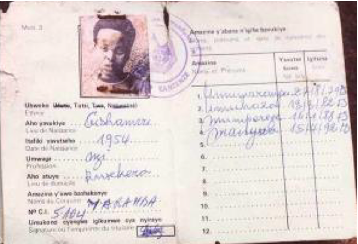
Explain the literal meaning:
passport-style photograph
birthplace
parents' names
government stamp of authentication
classification of the individual as Hutu, Tutsi, or Twa.
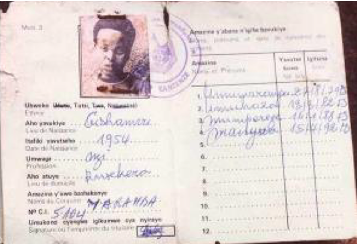
Explain the significance:
exemplifies racial hierarchy based on pseudoscience
Tutsis favoured (deemed "closer to European")
froze socially fluid identities into rigid categories
conflict between Tutsi and Hutu populations
Identity defined by the state rather than personal history
system led to unequal opportunities
fostered cultures of fear, paranoia, and resentment
ultimately contributed to the Rwandan genocide
Hutu used identity cards were used to target and kill Tutsi’s
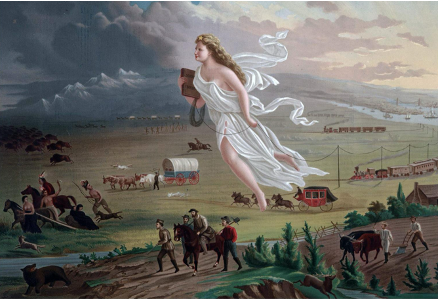
Context:
Who:
When:
Where:
Type of Source:
What was going on at the time:
Who: ?
When: 1873.
Where: Likely the United States.
Type of Source: Painting.
What was going on at the time:
period of westward expansion in the United States
driven by the ideology of Manifest Destiny
belief that the expansion of the US across continents = justified & inevitable
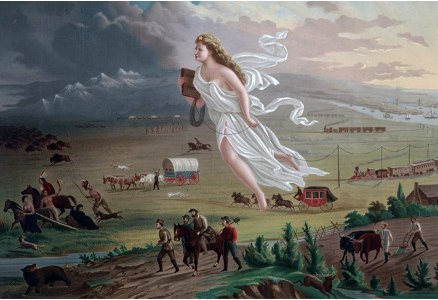
Explain the literal meaning:
Indigenous people on the left chased out towards the west
An angelic-looking, able-bodied white woman dressed in white
moving towards the west
carrying a bible
accompanied by symbols of progress (power lines, trains)
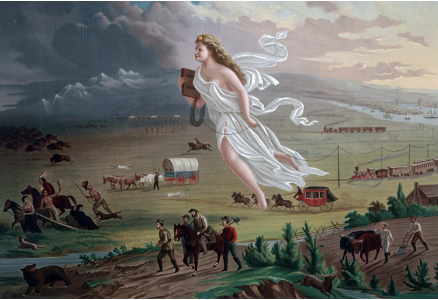
Explain the significance:
exceptionalist mentalities
belief in a god-given right to take over and cultivate land
white woman symbolizes destiny, bringing Western ideas, "brightness and light," to the land.
ideology that white people needed to come and make change
justifying displacement & oppression of Indigenous populations.
reminder of crimes committed during the nation-state building process in countries like Canada and the US.
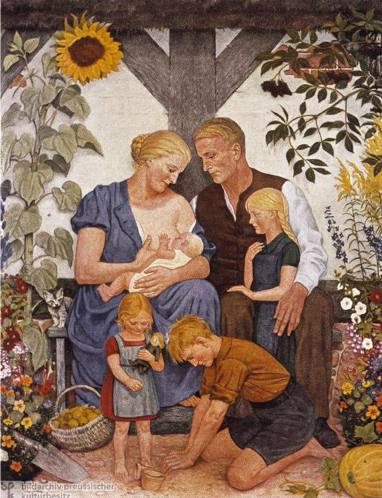
Context:
Who:
When:
Where:
Type of Source:
What was going on at the time:
Who: Wolfgang Willrich (artist).
When: 1938.
Where: Nazi Germany.
Type of Source: Painting - propaganda image.
What was going on at the time:
during the Nazi regime
promoted idea of Aryan supremacy
aimed to "purify" German culture → creating idealized image of the "Aryan" family.
involved the persecution of those deemed "impure".
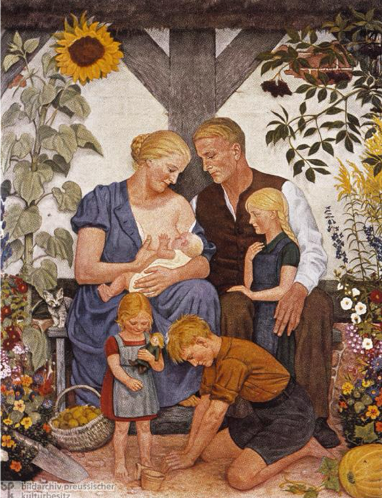
Explain the literal meaning:
family with white skin, blonde hair, and blue eyes
sitting in garden
plenty of food and flowers
little girl is holding a doll
older daughter looking lovingly at baby
son is working in the dirt
strong jawlines and rosy cheeks,
suggestions of rural living.
son's clothing resembles that of the Hitler Youth.
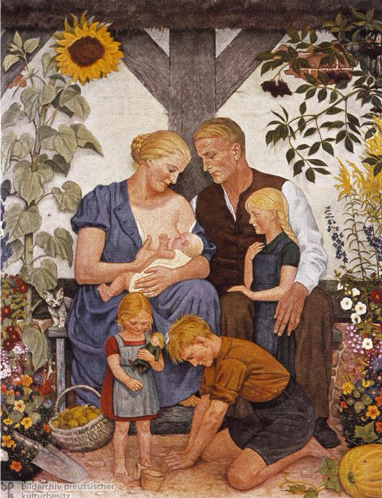
Explain the significance:
used as propaganda
encourage the idea of "purifying" German culture
promoting an ideal image of the "Aryan family"
desirable genetics
healthy connection to the land
reinforces traditional gender roles
daughters seemingly destined for motherhood
son as a worker, fitting Nazi ideology (planting seed as future of germany).
depiction of simpler, rural living (Nazi ideal)
propaganda aimed to promote the "fit" & the patriarchy
dehumanizing those considered "impure".
Imagery was weaponized to support Nazi racial ideologies.
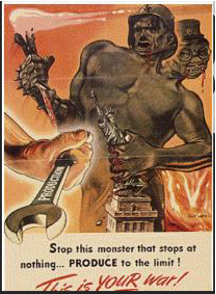
Context:
Literal Meaning:
Significance:
Context:
American propaganda during World War II.
~early 1940s
Literal Meaning:
two-headed giant (representing Hitler and another leader) tearing down the Statue of Liberty
. The monster= huge and unstoppable
Significance:
Destruction of lady liberty symbol of destruction of freedom and democratic values
unstoppable monster → urging everyone to resist, need to all work together
aimed to instill fear of the enemy, mobilize the American population (decision-makers, soldiers, civilians)
aim to unite against the Axis powers
dehumanizes the enemy, making it easier to accept the violence of war.
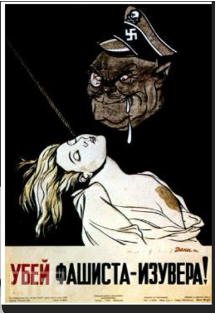
Context:
Literal Meaning:
Significance:
Context:
Soviet Union propaganda during World War II, after the Nazi invasion.
1941
Literal Meaning:
dark, feline-like creature (representing the Nazis)
creature drooling over blonde, pure, helpless woman who has been hanged.
creature emerges from the darkness above.
Significance:
helpless woman → This inverts Nazi racialism by portraying the supposed "Aryan" woman as a victim.
intended to evoke strong emotional responses (fear, outrage)
promote violence against Nazi invaders (depicting them as a fearful, supernatural force threatening vulnerable women)
dehumanizes the enemy, desensitizes people to violence by portraying them as monstrous.
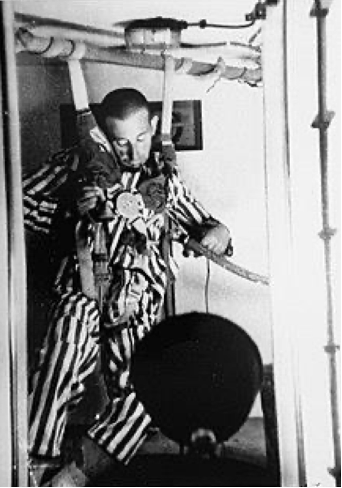
Context:
Who:
When:
Where:
Type of Source:
What was going on at the time:
Who:
photo at US Holocaust Memorial Museum
experiment conducted by Nazi doctors on prisoners in Dachau concentration camp.
When: 1942.
Where: Dachau concentration camp, Nazi Germany.
Type of Source: Photograph - historical record of Nazi war crimes.
What was going on at the time:
Nazi regime perpetrating systematic persecution and murder of various groups
conducting unethical, inhumane medical experiments on concentration camp prisoners
in the name of "scientific" research to benefit the "Aryan race”
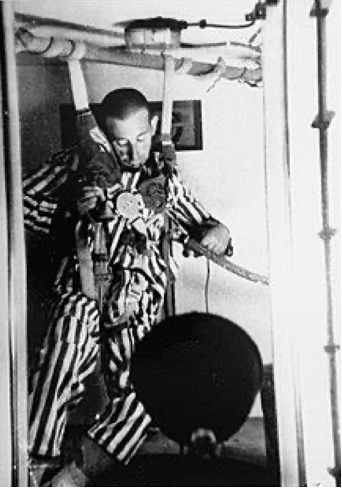
Explain the literal meaning:
male prisoner
concentration camp uniform
strapped into a medical testing apparatus
low-pressure simulation chamber.
prisoner appears unconscious.
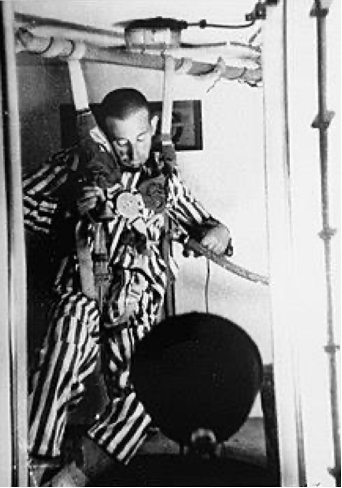
Explain the significance:
record of Nazi crimes against humanity
violation of all ethical standards of medical research
These "necessary" experiments, conducted on individuals deemed unworthy of life.
evidence of the dehumanization of prisoners who were treated as objects of experimentation.
knowledge gained from such experiments has led to significant ethical debates about whether it should be used, despite its unethical origins.
led to the development of modern research ethics, such as the Nuremberg Code
findings contributed to safety protocols for aviation regarding the effects of pressure on the human body.